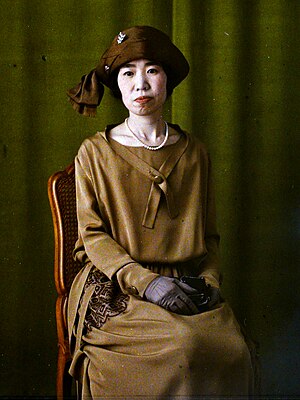Discover Your Roots
SIGN UPDiscover Your Roots
SIGN UPFusako is a lovely and feminine Japanese name that carries the delightful meaning of "Tassel, Cluster, Child." The name is primarily given to girls and originates from Japanese culture. It exudes a sense of elegance and grace, reflecting the beauty of nature and the innocence of childhood. Notable individuals bearing this name include Princess Fusako Kitashirakawa, photographer Fusako Kodama, and writer Fusako Tsunoda, among others. The name Fusako holds a deep significance in Japanese society, embodying qualities of charm and purity. Its gentle and melodious sound adds a touch of sophistication, making it a popular choice for parents seeking a name with cultural richness and a timeless appeal.

Fusako Kitashirakawa, also known as Princess Kane, was a member of the Japanese Imperial Family. Born in 1890 in Tokyo, she was the eleventh child of Emperor Meiji and Lady Sachiko. In 1909, she married Prince Kitashirakawa and had one son and three daughters. Following the Allied occupation of Japan, Fusako and other members of the Imperial Family were divested of their titles and privileges, becoming commoners. Fusako dedicated herself to the Ise Grand Shrine and served as its custodian and chief priestess until her passing in 1974 at the age of 84. Despite being stripped of her royal status, she continued to contribute to Japanese religious and cultural traditions. Fusako's legacy as a custodian of the Ise Grand Shrine and her commitment to her cultural heritage remain significant aspects of her life and influence within Japanese history.




All images displayed on this page are sourced from Wikipedia or Wikimedia Commons.We use these images under their respective Creative Commons or public domain licenses. Wherever applicable, author attributions and license information are provided. If you believe an image is used incorrectly or outside its license terms, please contact us so that we can review and correct the issue.